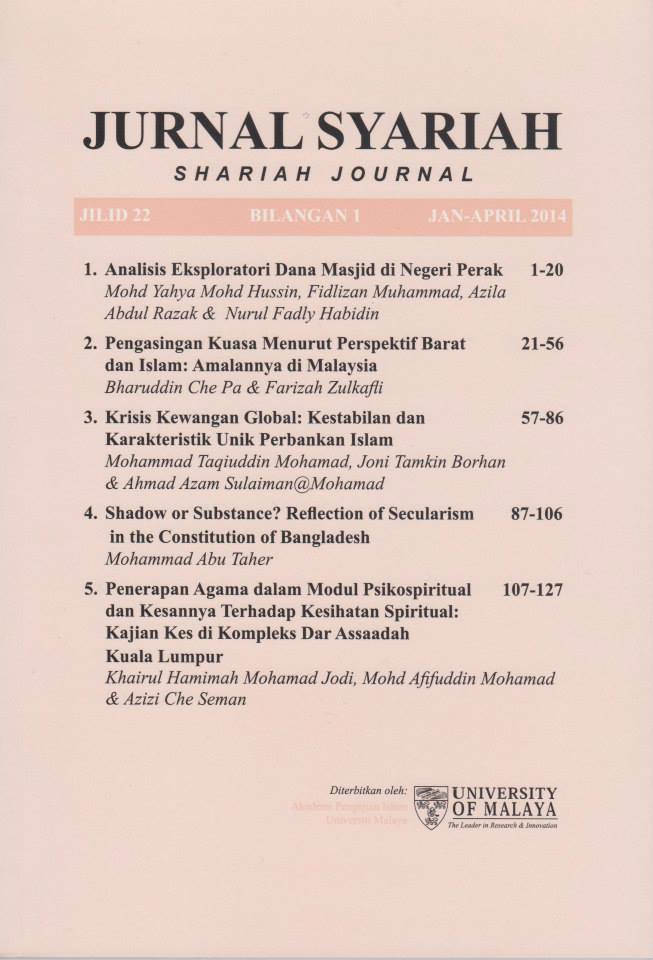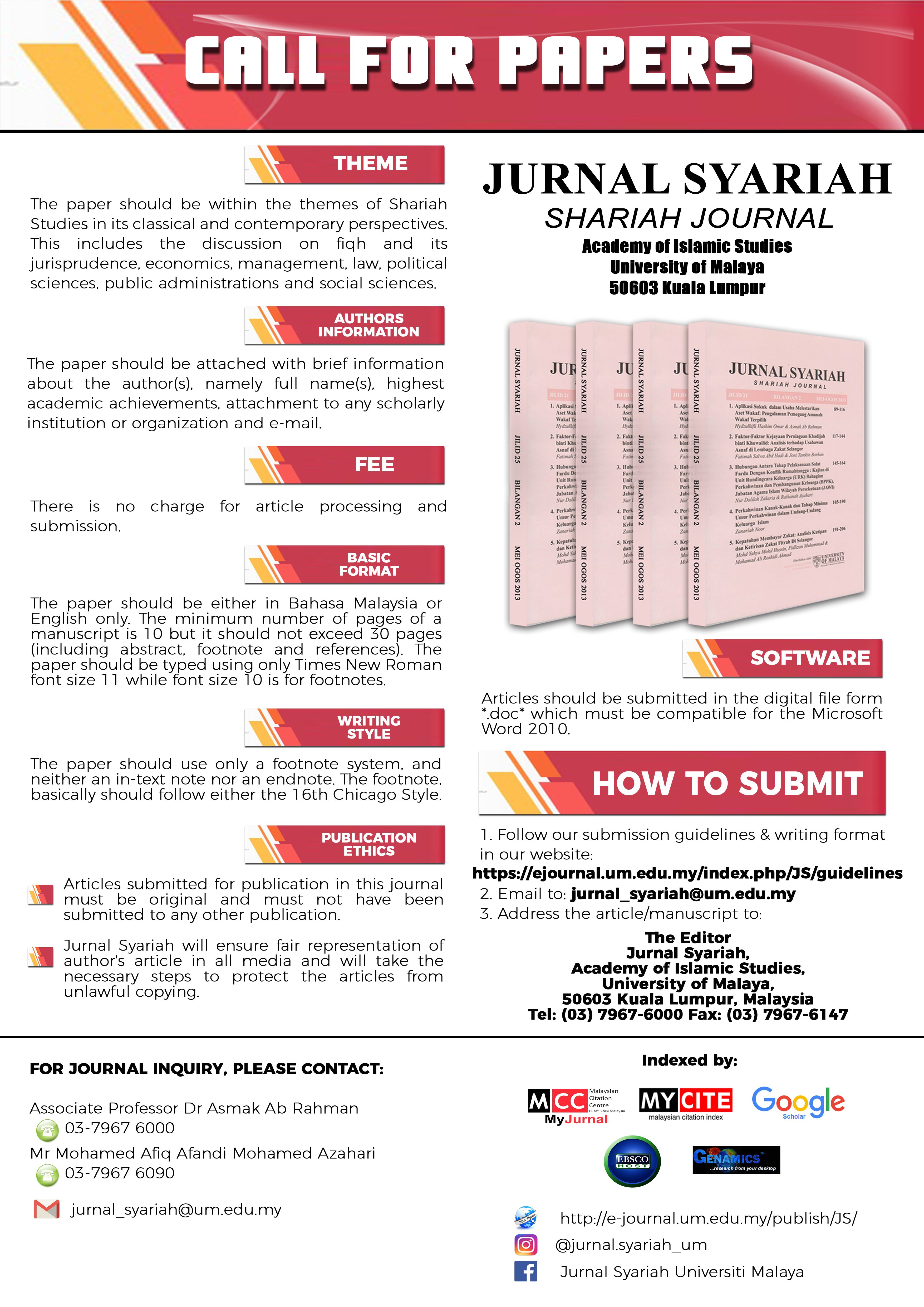PENGASINGAN KUASA MENURUT PERSPEKTIF BARAT DAN ISLAM: AMALANNYA DI MALAYSIA
The Separation of Power Between Western and Islamic Perspective: The Application in Malaysia
Keywords:
power, separation of power, Islamic perspective, application in MalaysiaAbstract
The concept of separation of power is a doctrine which recommends separation of powers between the three branches of the government, namely, legislative power, administrative power and judicial power. This article will elaborate on the doctrine of separation of powers according to Western and Islamic perspective as a comparative analysis. This study uses a qualitative approach and comparative method in examining to what extent the application of the concept of separation of power in Malaysia is in line with the principle of Siyasah al-Shar’iyyah. According to the Islamic perspective, power in a country should be based on Islamic law(shari’ah) and the role of Ijtihad of Muslim scholars, while in the Western concept, those in power are free to act according to the decisions made by the existing authority of the country. Malaysia does not practise the absolute concept of separation of powers. Nevertheless, what is practised in Malaysia is the consolidation of power between the legislative and governing bodies, while the judicial branch of power performs independently. This practice does not violate Islamic law principles as long as the Islamic political principles are preserved. However, if there are irregularities by certain parties until there is no justice in society, then that system is not compatible with the Islamic concept.
Downloads
Downloads
Published
How to Cite
Issue
Section
License

This work is licensed under a Creative Commons Attribution-NonCommercial 4.0 International License.
COPYRIGHT: All rights reserved. Not allowed to be reproduced any part of articles and contents of this journal in any form or by any way, whether electronic, mechanical, photocopying, recording or otherwise without permission in writing from the Chief Editor, Jurnal Syariah.



















